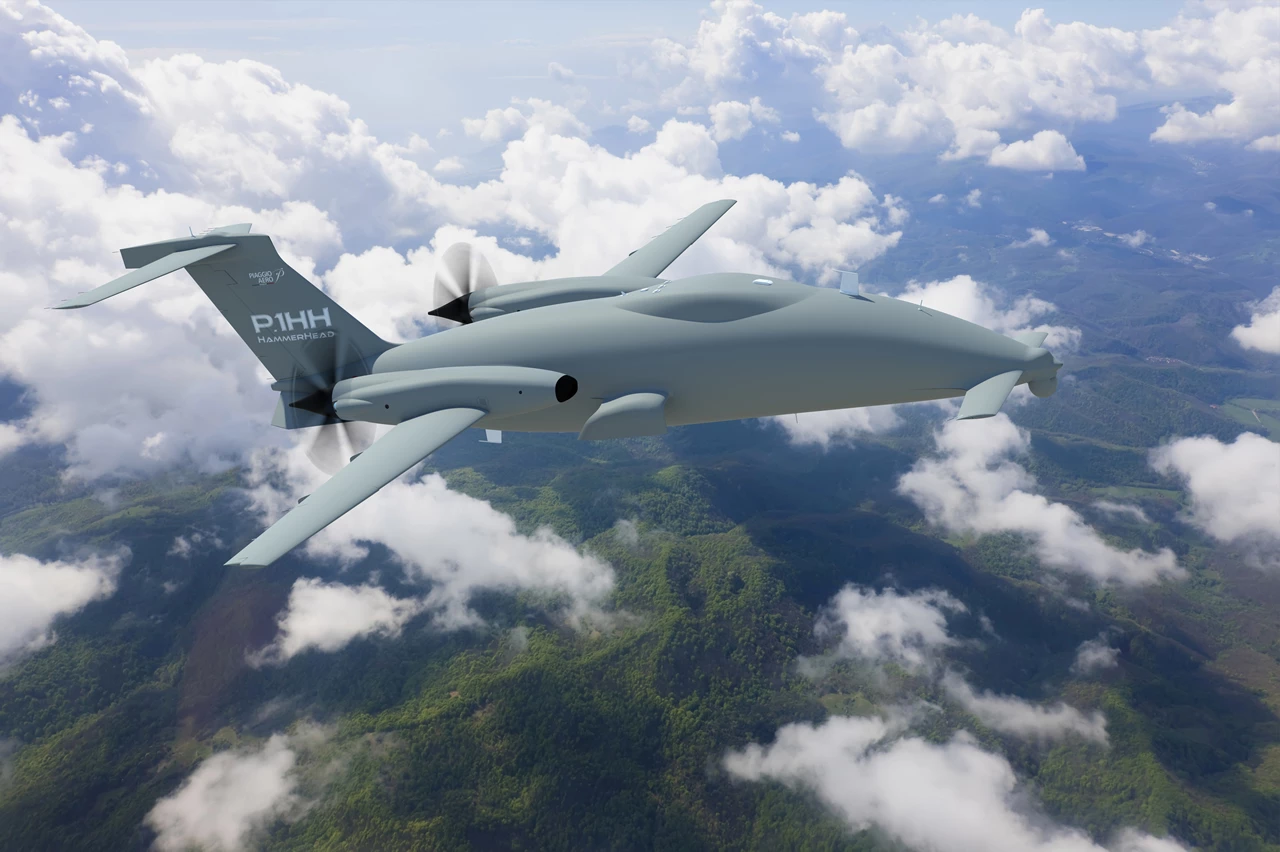There's little doubt that drones will play an increasingly prevalent role in our skies in the future, so any aircraft manufacturer that wants to stay ahead of the curve is either already building them, has some in the pipeline, or is madly trying to get them up and flying. Piaggio Aerospace is not a newcomer to the game of flight by any stretch of the imagination, being one of the oldest airplane manufacturers in the world. It is, however, perceived as more of a civilian and business aircraft manufacturer. But it is determined to make its mark in the lucrative defense and security sector and the successful maiden test flight of its Prototype 001 P.1HH HammerHead UAS is an important step down that path.
To the layman, Piaggio Aerospace is best known for its rather unconventional aircraft designs. It has long been a proponent of the canard design layout, which essentially puts a small forewing in front of the main wing. In Piaggio's case, what would normally be the elevator components of the airframe are attached up by the nose, rather than hanging off the tail, with the propellers also mounted at the rear. In addition to giving a rather pleasing aesthetic to the plane, a canard design also improves the flight and safety characteristics. So, when it came time for Piaggio Aerospace to make a drone, it stuck with what it knew, deriving the HammerHead design from its P.180 Avanti, which it touts as the fastest twin turboprop aircraft in the world.
The Prototype 001 P.1HH HammerHead Unmanned Aerial System (UAS) had its maiden test flight last December at the Trapani Birgi Air Force base in Italy. And according to the company, it all went swimmingly. The flight of the HammerHead came after a long development and demonstration program, which included the first flight of a demonstrator model in November 2013. Now that the Prototype 001 bird is in the air, Piaggio gets to roll up its sleeves and get to work on a comprehensive development and certification flight test campaign. It's the Chuck Yeager part of process, minus Chuck Yeager being in the cockpit.
First on the list is to validate that the HammerHead will be one of the most advanced MALE (Medium-Altitude Long-Endurance) unmanned systems on the market. That ability to "loiter on station" is one of the strengths that drones provide, with no pilot on board meaning they can orbit over a given location for literally days or weeks at a time. The HammerHead won't be scraping the edge of space, but where it will be flying, it will be there for a long time. With a flight ceiling of 45,000 ft, is designed to stay aloft for up to 16 hours at a time.
"The success of the Prototype 001 maiden flight is a fantastic step for the P.1HH program and for our company as a whole. It brings us closer to the achievement of our vision to combine our renowned business aviation capabilities with a primary position in the international surveillance and security industry," says Carlo Logli, CEO of Piaggio Aerospace, who added, "today we have very concrete reasons to believe that P.1HH will become the first European state-of-the-art MALE UAS, uniquely suited to perform a wide range of surveillance and security missions at the highest technological level."
The man holding the stick and rudder was equally upbeat. Project Pilot Sergio Paloni, who led the flight crew said, "We are very pleased with the result of the maiden flight. The aerial vehicle was seamlessly operated remotely with no experienced flaws. We were also able to gather significant data which will enable us to forge ahead with our ambitious development roadmap".
It's also worth pointing out that Paloni is the pilot in the sense that, yes, he's flying the thing, but he's not riding in it. Rather, he sits in front the ground control system (GCS) and flies the machine remotely. However, the aircraft does have autonomous capabilities, with automatic takeoff and landing (ATOL) and integrated navigation and mission systems. The GCS system allows the remote pilot to take control at any time, either through a line of sight communication system or via satellite when beyond line of sight.

The Prototype 001 aircraft that flew in December is the final aerodynamic configuration of the aircraft and includes onboard control systems and the new, extended span main wing measuring 15.6 m (51.2 ft), which can also be removed for transport. It measures 14.4 m (47.3 ft) long and 3.9 m (13 ft) high, and boasts a maximum speed of 395 KTAS, cruising speed of 320 KTAS, and loiter speed of 135 KTAS. Powered by two Pratt & Whitney Canada PT6A-66B 850 SHP engines, the aircraft has a maximum range of 4,400 nm (8,150 km, 5,060 mi).
The company says the aircraft will be customized to the needs of specific customers, but is fitted with ISR (intelligence, surveillance, reconnaissance) equipment based on the SkyISTAR from Selex ES, which Piaggio says makes it ideal for responding to a range of threats, including terrorist attacks, illegal immigration, and protection of infrastructure and critical sites.
At the International Defence Exhibition and Conference (IDEX) 2015 in Abu Dhabi this week, Piaggio announced the first sales of the HammerHead, with three UAS systems, consisting of six aircraft and three ground stations and complete with ISR configuration, to be delivered to the Italian Air Force in early 2016.
Source: Piaggio Aerospace








